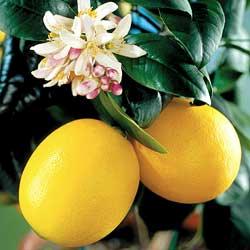Hi everyone! Hope you all enjoyed the
Easter Break. Our skin might be in need of a bit of TLC after all the chocolate we've eaten and the general abuse we've been putting our body through for the past couple of weeks. So why not combine a much needed detox diet with some
detox treatments for our skin?
I found these
easy home made cream recipes for different skin types that will take no more than 10/15 minutes to make. All recipes are from this Italian blog called
"In Modo Naturale", managed by
Ms Silvia Pepe, an Italian writer/entrepreneuse (and friend), who's also a committed
vegan, so you can be sure all the ingredients needed are the best and most natural you can think of.
Here's the link to
Ms Pepe's blog In Modo Naturale,
and to follow is the translation of her recipes for those of you who don't speak the lingo.
Enjoy!
MOISTURISING CREAM
Great moisturising cream to be used both in the morning and in the evening.
Ingredients:
3 tbsp rosehip oil*
3 tbsp distilled water
2 tsp grated vegetable wax
Directions:
Mix the oil and wax in a pot on low heat until you reach a smooth and even texture. Turn off the heat and keep stirring quickly for a couple of minutes. Add the water while stirring. Leave to rest for another couple of minutes and pour in the jars.
Keep stored in the fridge.
ANTI WRINKLE EYE CREAM
Excellent for mature skin.
Ingredients:
2 tsp jojoba oil
1 tsp coconut oil*
3 tsp safflower or rosehip oil
2 tbsp grated vegetable wax
5 tbsp rose water
10 drops rose essential oil
Directions:
In a double boiler place the wax and the oil and mix until you reach a even and smooth texture. Turn off the heat and add the water and essential oil. Leave to rest for a couple of minutes and pour into the jars.
Keep stored in the fridge.
CREAM FOR DRY SKIN
For very dry or dehydrated skin
Ingredients:
80 ml distilled water
1/2 cup sesame oil*
2 tsp vitamin E oil
2 tbsp grated vegetable wax
3 drops grapefruit essential oil
Directions:
With an electric blender mix the oils and the wax. Pour the mixture into a pot and cook on a low heat. In the meanwhile mix the water and the essential oil, stirring well, and pour into the pot. Keep stirring for a couple of minutes, then pour into the jars.
Keep stored in the fridge.
GINGER FACE CREAM
Soothing and calming cream for very dry skin
Ingredients:
20 gr fresh ginger
2 tsp sesame oil
2 tsp almond oil*
2 tsp vitamin E oil
1/2 cup coconut oil
Directions:
With a juicer, squeeze the ginger and mix the juice to all the other ingredients in a double boiler. Stir well until the mixture becomes smooth and creamy.
Pour into the jars and store in the refrigerator.
ALOE FACE CREAM
For all skin types, packed with all the amazing properties of Aloe
Ingredients:
100 ml distilled water
200 ml aloe gel
200 ml almond oil*
100 ml coconut oil*
2 tbsp grated vegetable wax
Directions:
In a cup, mix the water and the aloe stirring well.
Meanwhile, mix the wax and the oil in a double boiler, on a low heat.
Mix the 2 compounds with an electric blender on a low speed for 3 minutes.
Pour the cream into the jars and keep stored in the refrigerator.
TEA TREE FACE CREAM
Perfect for oily skin, very effective against acne.
Ingredients:
4 tbsp hazelnut oil*
2 tbsp grated vegetable wax
1/2 cup green tea
2 tbsp aloe vera juice
5 drops Tea tree
Directions:
In a double boiler mix the wax and the oil. Turn off the heat and add the aloe and the green tea stirring well. Add the essential oil. Store in the refrigerator.
* If you suffer from Nut Allergy you can substitute these ingredients with Olive Oil or Jojoba Oil.








































.jpg)

